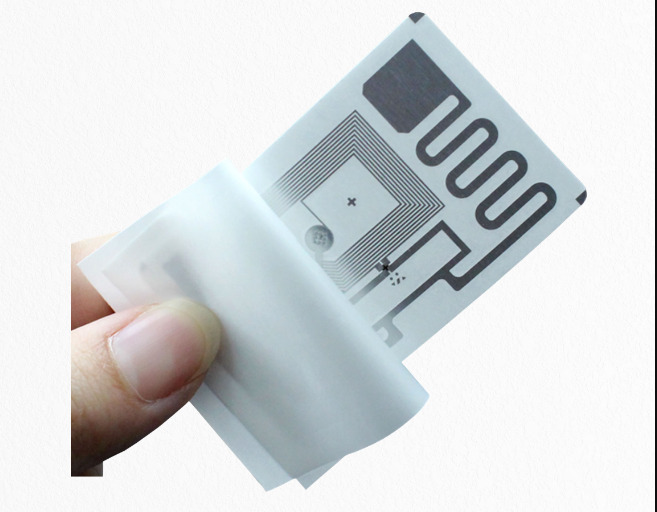In addition to the chip threshold, dual-frequency tag equipment and manufacturing difficulties are also more difficult than ordinary tags, because the working principles of HF and UHF two different frequency bands are completely different, one is near-field coupling, and the other is far-field radiation, which requires two different antenna combinations.

علامات RFID مزدوجة التردد
بالاضافة, the current usage of dual-frequency products is not large, so dual-frequency RFID products, whether they are chips or tags, are more expensive than ordinary ones.
According to the information we have investigated, the application volume and application scenarios of dual-frequency RFID tags are increasing rapidly, and may become a new market growth point.
1. Introduction to the advantages of dual-frequency RFID
The advantages of dual-frequency RFID products mainly include the following two aspects
ميزة 1: It retains the function of UHF RFID rapid inventory in large quantities
The biggest advantage of UHF RFID is that it has a long transmission distance and can be read in groups. It is very suitable for some scenarios that require quick inventory, especially in the B-side warehousing logistics and sorting links.
ميزة 2: retains the ability of HF RFID to interact with mobile phones
Because NFC on mobile phones is a kind of HF RFID technology, HF RFID tags can interact directly with mobile phones, which greatly expands the use boundary of RFID. Anti-counterfeiting traceability requirements.
وبالتالي, dual-frequency RFID tag products can not only meet the needs of the B-side for efficient turnover, anti-lost, and visual management, but also meet the needs of the C-side crowd for anti-counterfeiting and traceability, which can form a good closed loop in business.
2. Dual-frequency RFID market and application introduction
The application scenarios of dual-frequency RFID products mainly have the following characteristics
أول, the usage scenario needs to combine the high inventory efficiency of ultra-high frequency and the characteristics of high frequency interaction with mobile phones, which requires a relatively large amount of applications and concentrated, so that there is a demand for large-scale inventory; ثانيا, product consumption It has strong attributes and needs to interact directly with consumers.
ثانيا, the unit price of the product in the application scenario is more expensive. Because the product is more expensive, it will stimulate consumers’ demand for anti-counterfeiting traceability. بالاضافة, سعر منتج علامة RFID مزدوج التردد نفسه أيضًا أغلى بكثير من علامة التردد الأحادي. فقط السيناريوهات عالية القيمة يمكنها تحمل مثل هذه التكلفة.
الثالث, هناك طلب قوي لتحديد الأصالة, ولكن هناك نقص في منتجات التأييد الرسمية في السوق. يتطلب هذا النوع من المنتجات من المستهلكين تحديد الأصالة بأنفسهم, الأمر الذي يتطلب استخدام الوسائل التقنية.
حسب هذا المنطق, نعتقد أن المجالات التالية أكثر ملاءمة للمنتجات ثنائية النطاق.
1. High-end alcohol products
This field is a scene where dual-frequency RFID products are being used in large quantities, because high-end liquors have a large shipment volume, such as Maotai, Wuliangye and other high-end liquors, which are in the tens of millions or even hundreds of millions of shipments per year. There is a demand for warehouse inventory. بالاضافة, the price of high-end liquor can range from several hundred yuan to several thousand yuan, which can fully cover the input cost of dual-frequency labels. المستهلكون لديهم متطلبات عالية نسبيًا بخصوص أصالة المشروبات الكحولية.
2. فخم. ترف
فمثلا, الساعات الراقية, الحقائب وغيرها من المنتجات باهظة الثمن. المستهلكون بحاجة ماسة إلى أصالة هذه المنتجات. وعلاوة على ذلك, حجم السوق الحالي كبير نسبيًا ويتطلب مخزونًا أسرع. وبالتالي, التردد المزدوج في هذه الفئة. هناك أيضًا المزيد من السيناريوهات. من المفهوم أن هناك أيضًا العديد من العلامات التجارية الفاخرة في الأسواق الخارجية التي تحاول استخدام علامات RFID ثنائية التردد.
3. المقتنيات
Collectible products include gold, stone, jade, antiques, calligraphy and paintings, and various handicrafts. These products are very expensive, but they require a high degree of professional ability to distinguish between true and false. It is difficult for ordinary people to identify them, so they need to use dual-frequency RFID tags. screening.
4. مكتبة
في الوقت الحاضر, some libraries in China use dual-frequency solutions, but this is a problem left over from the development of the industry, because in the early days, many libraries used high-frequency tags, but with the maturity of UHF RFID and cost reduction, UHF RFID It can also meet the market demand, resulting in many libraries that use high-frequency solutions need to use dual-frequency solutions to overdo it.





